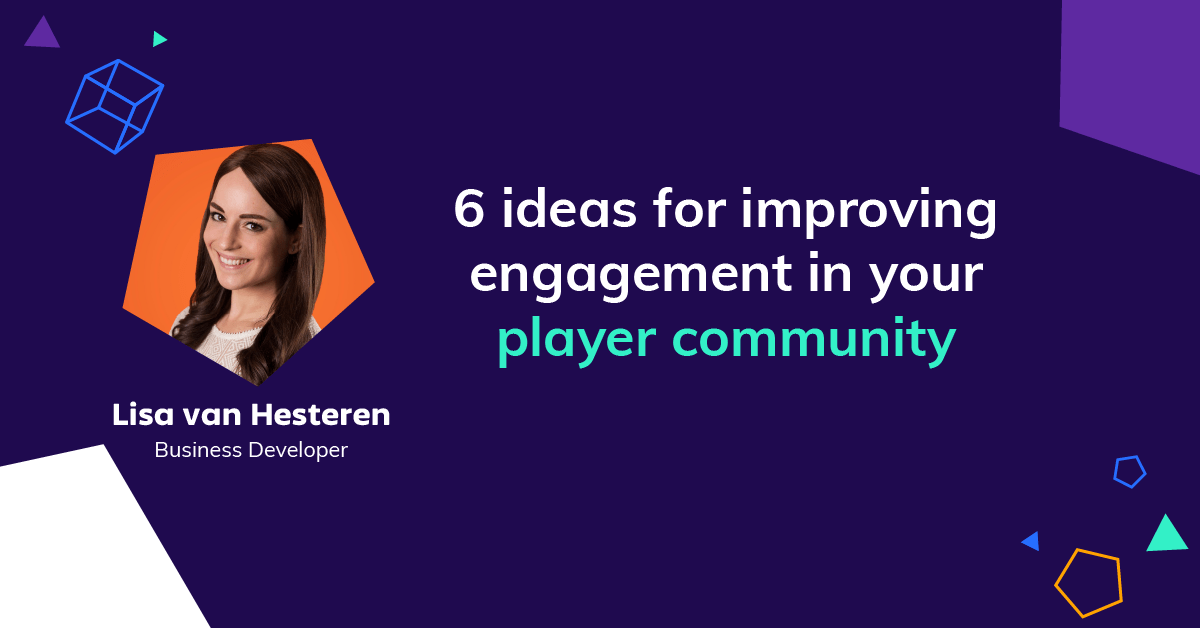6 Ideas for Improving Engagement in Your Player Community
The wonderful world of gaming…! It’s pretty distinct in the wider entertainment industry. Gamers don’t really behave like customers—they behave more like fans.

The wonderful world of gaming…! It’s pretty distinct in the wider entertainment industry. Gamers don’t really behave like customers—they behave more like fans.

The wonderful world of gaming…! It’s pretty distinct in the wider entertainment industry. Gamers don’t really behave like customers—they behave more like fans.
When someone chooses to play one of your titles, they’re giving it their time, attention, and emotion—plus hopefully some cash, too. A player that needs help on a customer service chat or call is very different to a customer calling their insurance or gas company. Nobody I know is a ‘fan’ of their electricity supplier.
So, if your customers tend to behave more like fans, then technically it should be fairly easy to engage with them, right? Well… sometimes.

It’s certainly easier to interact 1:1 with customers who are passionate about your products, but what about creating lasting engagement (with the brand, and amongst their peers)? How can gaming vendors capitalize on that emotion-fueled passion for the brand and create lifelong brand advocates?
Here are a few ideas based on my own experience of working with a plethora of gaming communities over the years:
1. Recruit players as mods: Consider inviting your experienced, VIP players to take on volunteer moderator roles. The mods help to improve the game environment by using sanctions when they need to. For example, they can mute a player that is being inappropriate or abusive, they can apply suspensions or send a player to prison, forcing them to cool down. The mods not only improve the game for everyone by acting like cops and ensuring that their peers are responsible, but this is an enormous boon for their relationship with your brand. Players love it when game publishers ask them to get involved in managing the game experience for all the ‘regular’ players. What’s more exciting than getting a special role and being noticed while doing the thing you love?! Take a look at what Jagex is doing with Runescape. They utilize more than 2000 of their most loyal players to volunteer as in-game mods. This is a great example of how to bring gamers inside the tent.
2. Video Blogs: Video blogs, usually on YouTube, give gamers a direct window onto the development process. They love seeing all those behind-the-scenes videos, direct from the developers and testing team. You can use the video channel to announce news, updates, and anything funny happening with the development team. It’s a great way to build an emotional connection, especially when different team members can contribute video content. Consider using this process for player
feedback, too—if they feel their voices are being heard (even though, of course, not all feedback makes sense or can be implemented) their connection with your brand is only strengthened further.
3. Competitions: It’s easy to create competitions on social media that are linked to your game. Gamers love merchandise connected to their favorite games and when it’s free, that’s even better! Try to think about interesting or unusual prizes that are more unique than a baseball cap or t-shirt though—why not get the development team to sign a document used by one of them during the initial creation of the game? It costs almost nothing, but is priceless to a fan of the game. Or consider a limited edition run of merchandise signed by individual devs or creatives on the team. Use the competitive nature gamers already possess to create tons of engagement around these giveaways and competitions.
4. Promote Your Top Creators: Gamers don’t just play games—they create enormous volumes of content around the gaming experience. Videos, livestreams, they go to cosplay events, create their own communities, merch and cakes featuring games characters. Use your brand’s social media channels to draw attention to all your players’ content and create a sense of community engagement. Ask fans to hashtag their creations with a brand-specific tag and return the favor by highlighting and sharing their work and efforts.
5. In-Game Events: Cinema fans have recently been watching movies at a virtual cinema inside Fortnite. When the rapper Travis Scott appeared at a virtual concert inside Fortnite the show attracted 28 million fans. Yes—that’s 28 million fans at a single show. Contrast that to when U2 played 110 shows on their 360 tour and sold 7.2 million tickets. In-game events can be bigger than the real thing.
6. Utilize In-Game Support Agents that are Fans of Your Brand: Anytime a player has a problem and uses the chat functionality they will usually be engaging with an agent one of your customer service suppliers—perhaps one of 5CA’s ‘Fans of Your Brand’ Work-from-Home agents. One of the key differences that sets 5CA apart with our in-game agents is that we hire gamers to support gamers. This means that every interaction brings the player closer to the game—because the support team are also fans. We do this by focusing heavily on domain knowledge—as we build teams to support specific games, we seek out fans of that game who have the skills to support their peers. We can then give them the training and tools they need to be successful, but the enthusiasm for helping other gamers will already be there—and that’s a gamechanger when it comes to the player experience.
Think about the ways you’re currently harnessing your player community—because for sure you already have one. Look at how you can improve and find ways to lift engagement with your fans to the next level. Keeping them close is the key to success.
If you are eager to learn more, be sure to read this blog on what benefits a supercharged community will hold for you.

In today’s rapidly evolving business environment, Artificial Intelligence (AI) has become a buzzword, revolutionizing industries and transforming the way we work. While AI’s impact on workforce management is undeniably significant, and my advice is to initiate pilots on this topic, this blog will focus on a different, yet equally crucial aspect: how to effectively structure your workforce for optimal performance and success.

In today’s competitive market, customer experience (CX) isn’t just about fixing problems—it’s about creating real connections. From my experience working directly with some of the world’s top brands, I’ve learned that the key to exceptional CX often comes down to setting up teams who are true fans of the brands they represent. This belief is central to what we do at 5CA, and it’s proven to make a real impact on customer support.